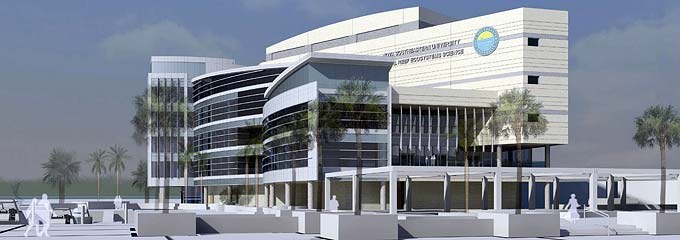Here is the original press release for the construction of The Center of Excellence for Coral Reef Ecosystems Science Research Facility. (Can the name be any longer?! I will henceforth refer to the new facility as TCECRESRF)
This week, www.RDmag.com published an article detailing the design and construction aspects of the construction project. While the article focuses on the design aspects, since the facility is naturally designed with purpose, we get a better understanding of what TCECRESRF will do.
Some snippets and summaries of the article:
Scientists from the Nova Southeastern Univ. Oceanographic Center have dedicated nearly half a century to the study of the history, health, impacts, restoration and conservation of coral reefs. The U.S. Congress has recognized Nova Southeastern’s leadership in coral reef research and in 1998 mandated the establishment of the National Coral Reef Institute (NCRI), which resides in Fort Lauderdale at the Oceanographic Center of Nova Southeastern Univ.
According to the article, Nova Southeastern “successfully competed against 167 well-known, nationally recognized universities to win a $15 million award from the National Institute of Standards and Technology (NIST)” to build this facility. Nova Southeastern was able to secure additional funding totaling $37 million to construct TCECRESRF and is scheduled to open in January, 2012. Nova Southeastern plans to add 22 new academic positions and employ 50 graduate students once the facilities are operational.
TCECRESRF will include:
Two design elements of particular interest to reefkeepers:
Seawater is batch treated to refine the water quality before being moved into a secondary treatment system that further clarifies the water quality and adjusts the water for temperature. Treated water is pumped to a storage tank in the penthouse from where the water is distributed by gravity to the interior and exterior seawater labs. For the extremely sensitive science of coral propagation, there is third seawater treatment loop specifically designed to further clarify the water quality and temperature. Removal is also highly controlled by a return system of filtration and tanks to ensure that sewater is returned to the ocean at the optimum temperature and quality.
The main energy conservation system, however, is a highly efficient chilled water system utilizing ice-based thermal energy storage. The ice field is created during off-peak hours in modular tanks by running water source chillers, and to maintain comfort conditions even on warm summer nights, the water used for the formation of ice is mixed with building return water to maintain a constant 40°F supply. During the day, with the chillers off, sufficient cooling for all anticipated environmental and scientific conditions is provided by running chilled system water through the ice field tanks before being fed to the air handling units.
The scope of design is expansive, and the details are meticulously thought out. Read the full article at RDmag.com (source link provided in the footer).
From this:

To this:












0 Comments